Behind-the-Scenes of Ford v Ferrari: High-Tech Kit and Attention to Detail for Realistic Racing
Authenticity was key to the success of Ford v Ferrari and now these exclusive on-set photographs reveal how it was achieved
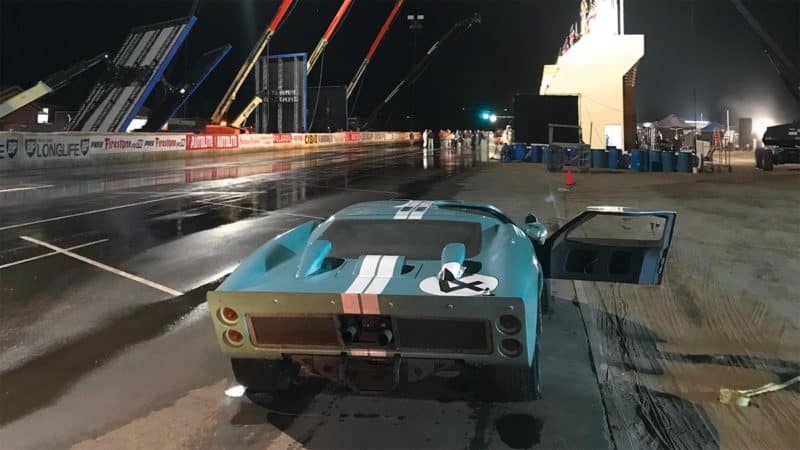
On-set photos by Tory Alonzo and Derek Hill
With its gritty, high-intensity race sequences, Ford v Ferrari has become a hit film with a swathe of motor racing fans due to its realism. Computer generated effects were limited to crash scenes and overall establishing shots of the grandstands, while the cars you see look identical to the ones that would have competed in the actual Le Mans 24 Hours race in the mid-1960s – albeit modern recreations.
But how was this realism achieved? As these exclusive behind-the-scenes pictures show, the answer is with a lot of high-tech kit and some good old-fashioned attention to detail. Motor Sport caught up with the film’s vehicle director Rob Johnson – speaking from Los Angeles – to talk us through the photographs, many of which he took himself between takes. Other images were taken by stunt driver Derek Hill (who you can read more about on page 86). Johnson worked on the project for seven months, leading a team that would use, and occasionally crash, the more than 400 cars used during a flurry of filming, mostly in Georgia and California, in summer 2018.
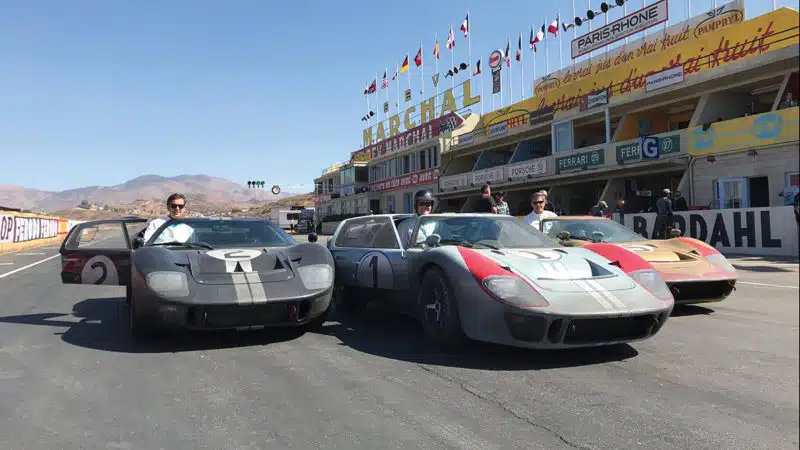
The largest set for the film was this accurate reconstruction of the Le Mans pit buildings, which was constructed at Agua Dulce Airpark, a private airport in Santa Clarita, California
On-set photos by Tory Alonzo and Derek Hill
He recalls filming the pit areas and start-finish straight scenes on a specially built set at the southern end of an LA regional airfield. It was the perfect spot for filming and for building the famous Circuit de la Sarthe grandstands – the only problem being that the airfield was still active at the time. “We were in the south but the north was still going,” Johnson recalls. “We had spotters to see them and let us know when they were coming in to land or take off.”
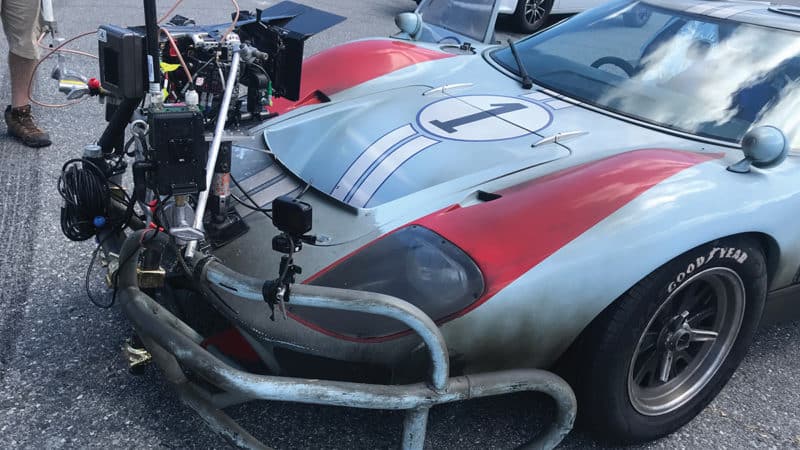
Low-level camera mounts fitted to a Ford. Actors were told to use a full range of facial expressions when racing
c
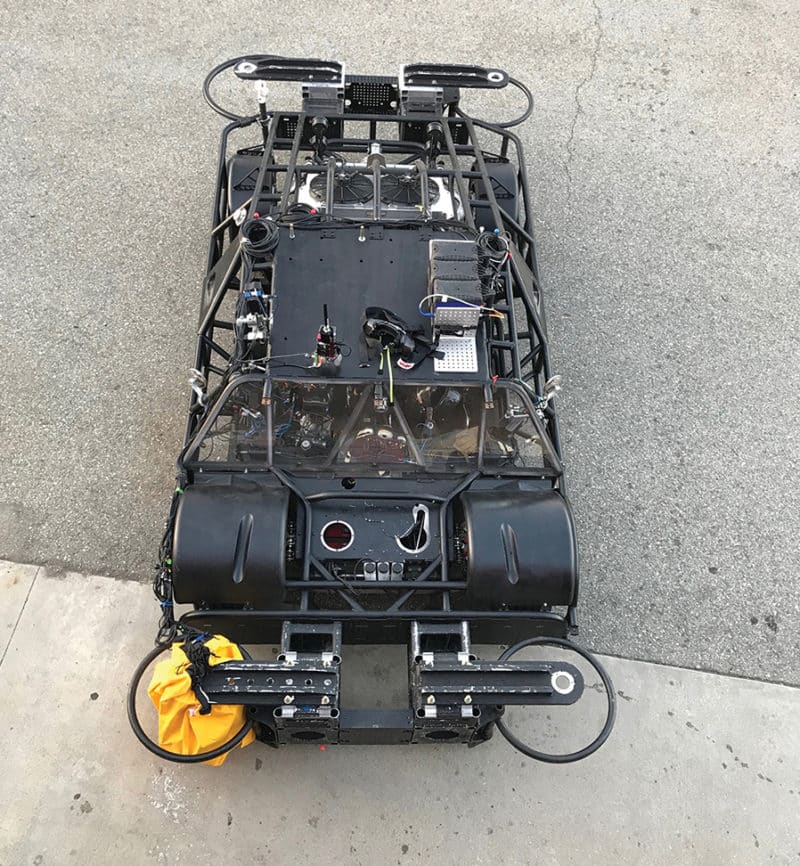
The camera vehicle affectionately nicknamed ‘Frankenstein’. It was primarily used to film head-to-head race scenes to be parallel to the racing drivers
On-set photos by Tory Alonzo and Derek Hill
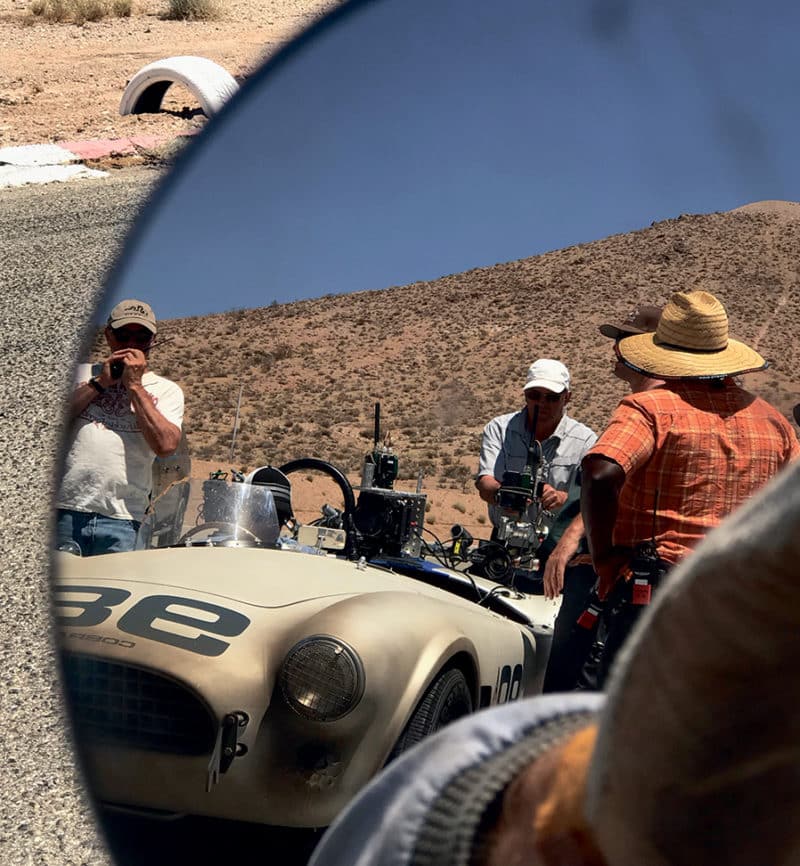
Finding the perfect angle ahead of the Willow Springs race, which Miles wins at the final turn after a carefully planned move as Shelby waits in the wings
On-set photos by Tory Alonzo and Derek Hill
Johnson says one of the biggest challenges was making sure the cars looked the part even out of sequence. Often that meant filming one scene with a Ford GT in race trim – ie filthy – then immediately afterwards filming it in a pre-race scene which meant it had to be spotless. “Even though it wasn’t my job I spent a lot of time helping wash and polish those cars,” he says.
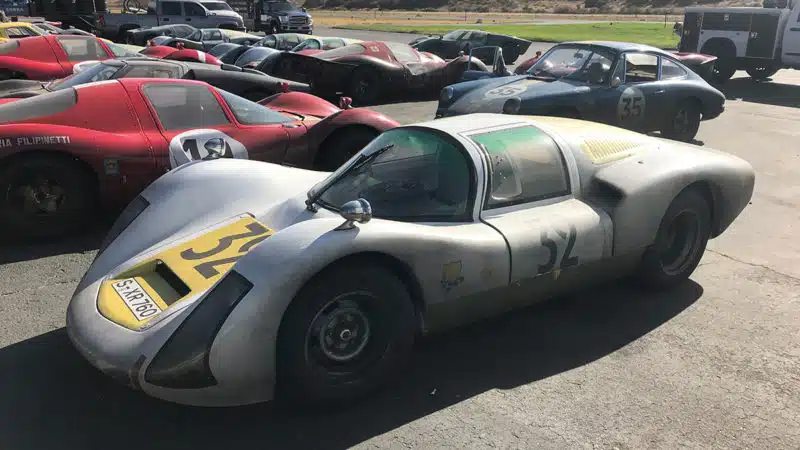
It wasn’t just Fords and Ferraris. This Porsche 906 is a replica, but the Porsche 911 behind is real
On-set photos by Tory Alonzo and Derek Hill
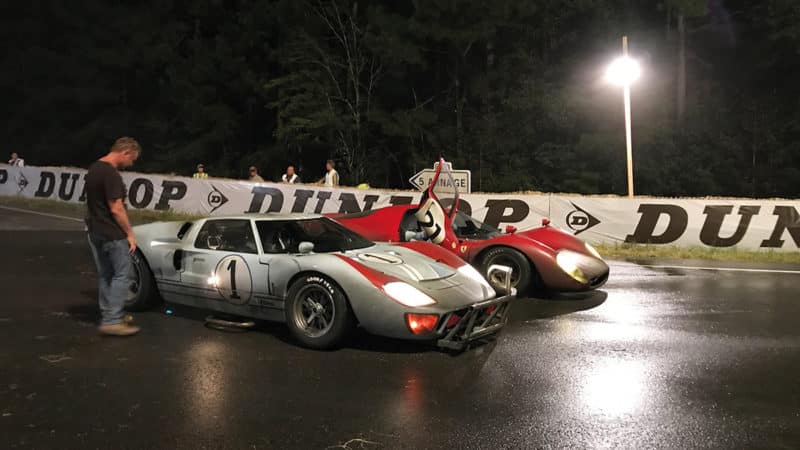
The start of a wet night-time shoot approaching what’s meant to be Arnage. This was tricky for the stunt drivers, with limited visibility and grip after the rain machines had done their thing
On-set photos by Tory Alonzo and Derek Hill
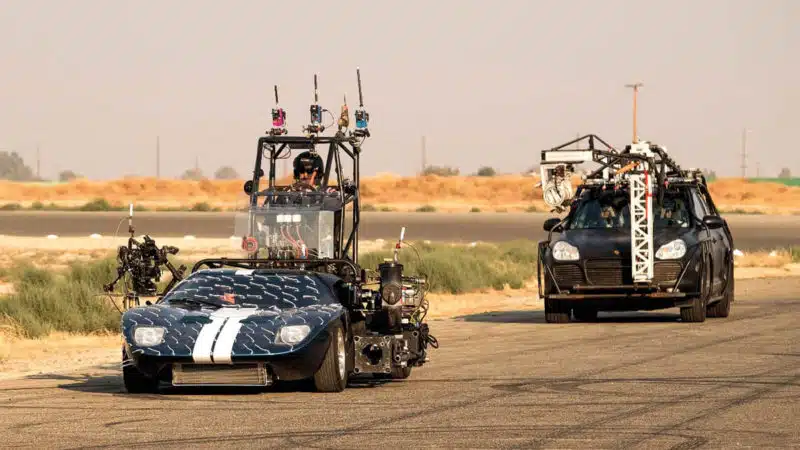
Racing director Darrin Prescott ensured some racing scenes had multiple angles
On-set photos by Tory Alonzo and Derek Hill
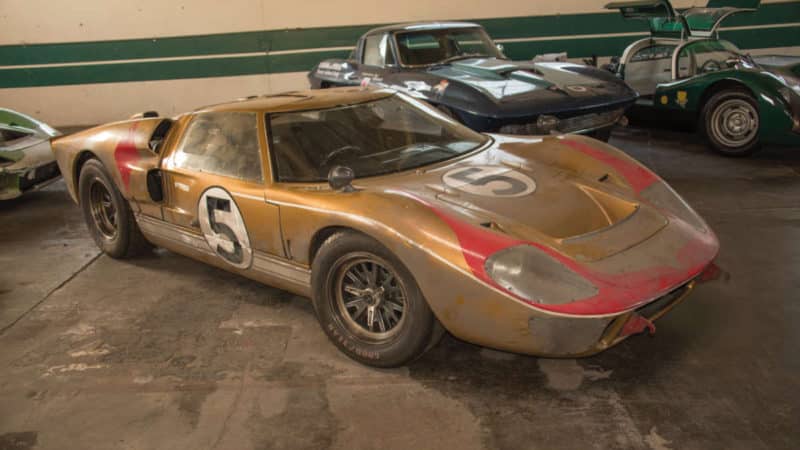
The Ronnie Bucknum/Dick Hutcherson GT40
On-set photos by Tory Alonzo and Derek Hill
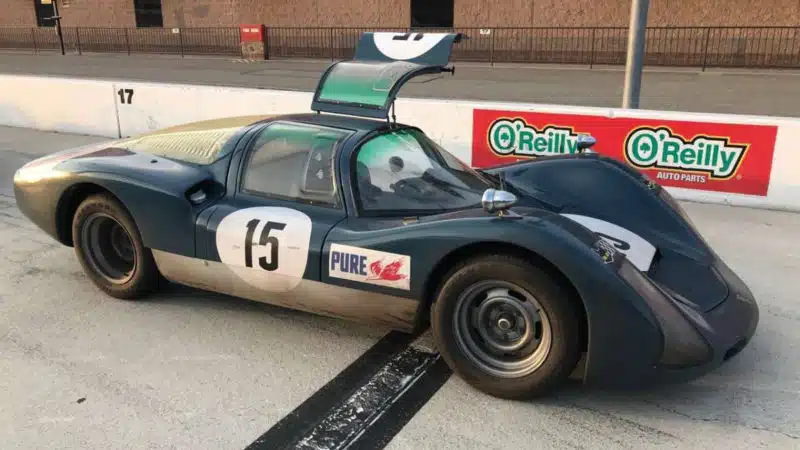
The Hans Herrmann/Herbert Linge Porsche 906 was used in the Daytona filming
On-set photos by Tory Alonzo and Derek Hill
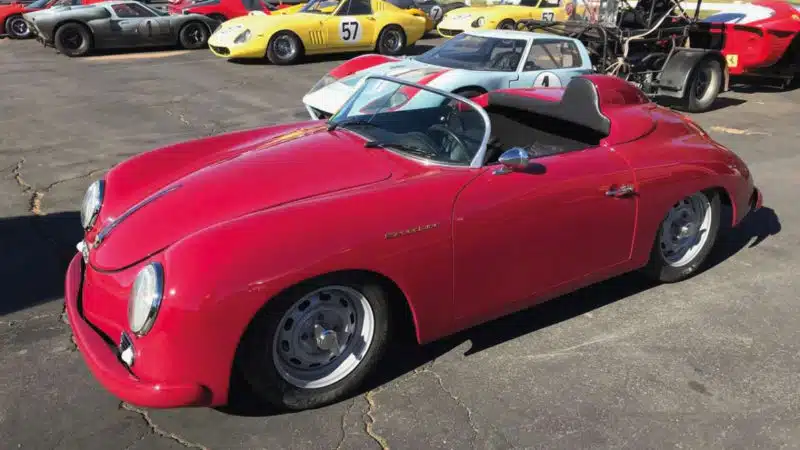
Porsche Speedster with a ‘turtleback’ headrest. This is one of three replicas made
On-set photos by Tory Alonzo and Derek Hill
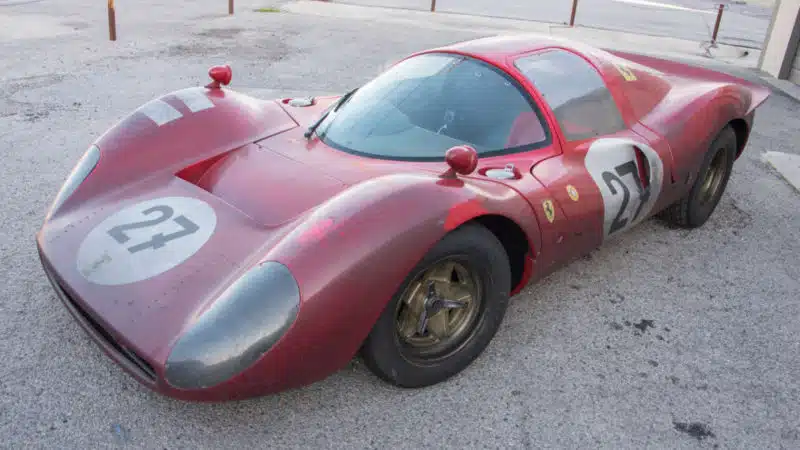
RCR’s version of the Ferrari 330 P3 Spyder driven by Richie Ginther and Pedro Rodríguez at Le Mans in 1966. The film’s director of photography Phedon Papamichael would confirm whether a car appeared weathered enough. Often it could take hours of touch-ups to achieve a particular look
On-set photos by Tory Alonzo and Derek Hill
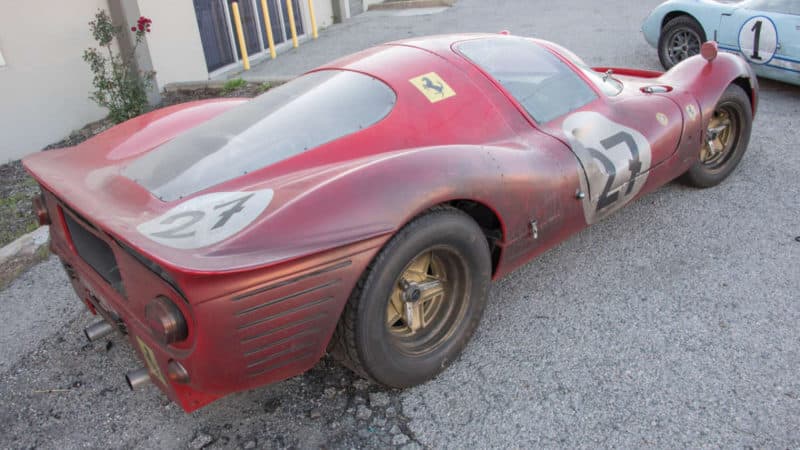
RCR’s version of the Ferrari 330 P3 Spyder driven by Richie Ginther and Pedro Rodríguez at Le Mans in 1966. The film’s director of photography Phedon Papamichael would confirm whether a car appeared weathered enough. Often it could take hours of touch-ups to achieve a particular look
On-set photos by Tory Alonzo and Derek Hill
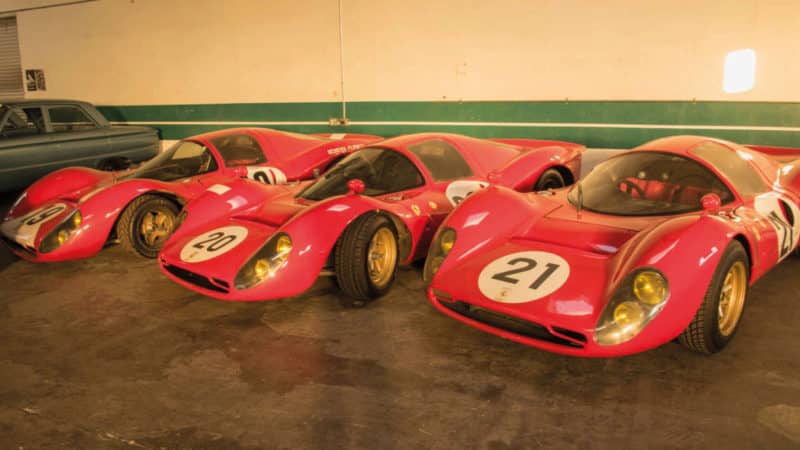
Race Car Replicas made the running Ferrari P3 for the movie. It managed to create 28 different cars in just 16 weeks for the shoot
On-set photos by Tory Alonzo and Derek Hill
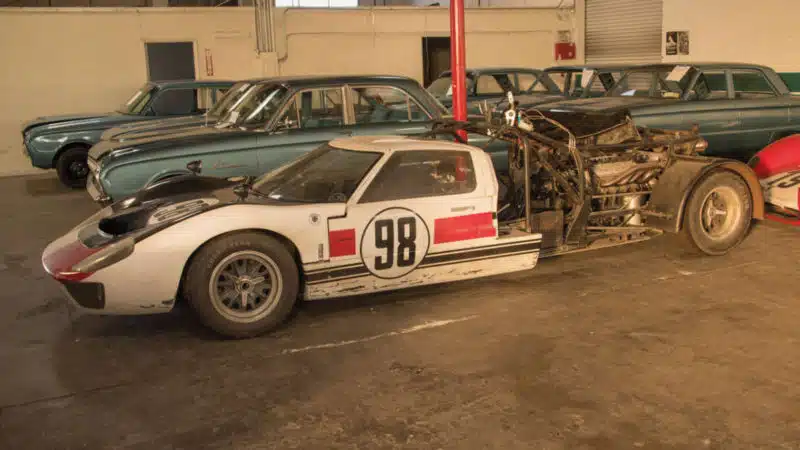
the pod car was used for certain driving sequences, with a stuntman operating the car from behind and above the cockpit. Behind it are several of the 20 Falcons that appeared in the Ford factory scenes
On-set photos by Tory Alonzo and Derek Hill
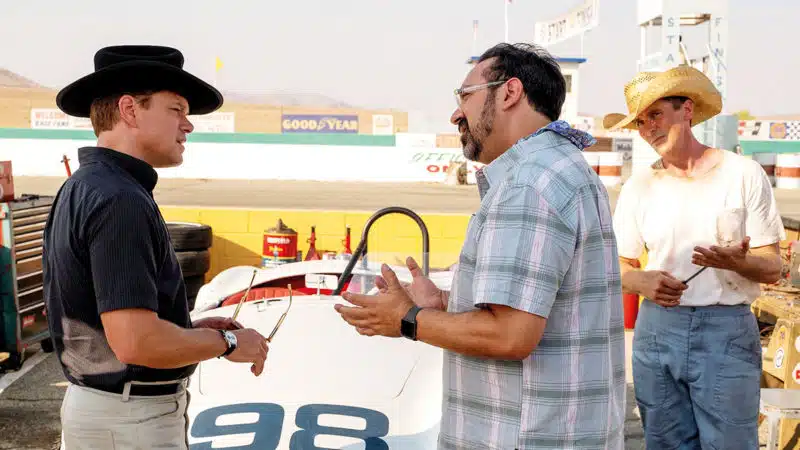
Mangold briefs Matt Damon ahead of the scene at Willow Springs where Ken Miles loses his cool and throws ‘that’ wrench at him
On-set photos by Tory Alonzo and Derek Hill
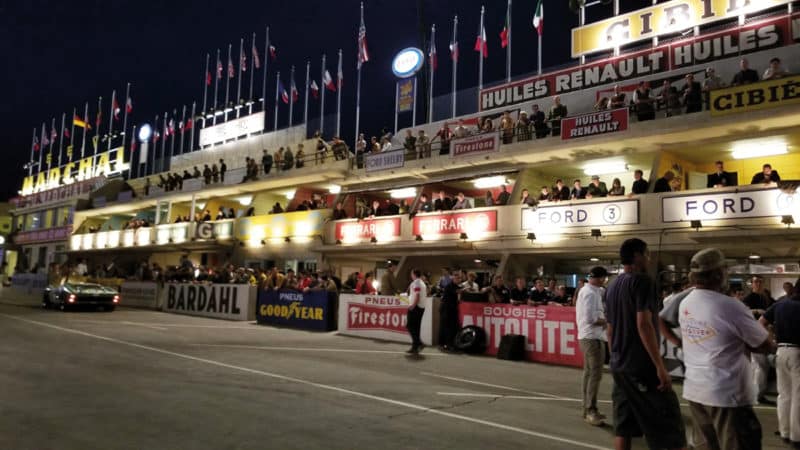
The Le Mans pits, built entirely from scratch, were incredibly convincing. Along with the main garages, the crew also assembled a range of grandstands and the press room
On-set photos by Tory Alonzo and Derek Hill
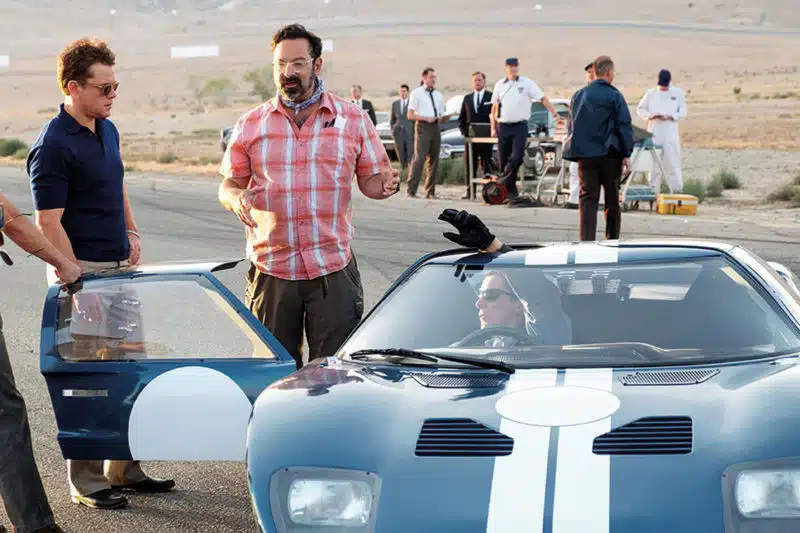
Mangold on set with Matt Damon and Christian Bale, giving instructions ahead of another take. For his driving, Bale was assisted by racing veteran Bob Bondurant, who was a close friend of Ken Miles
On-set photos by Tory Alonzo and Derek Hill
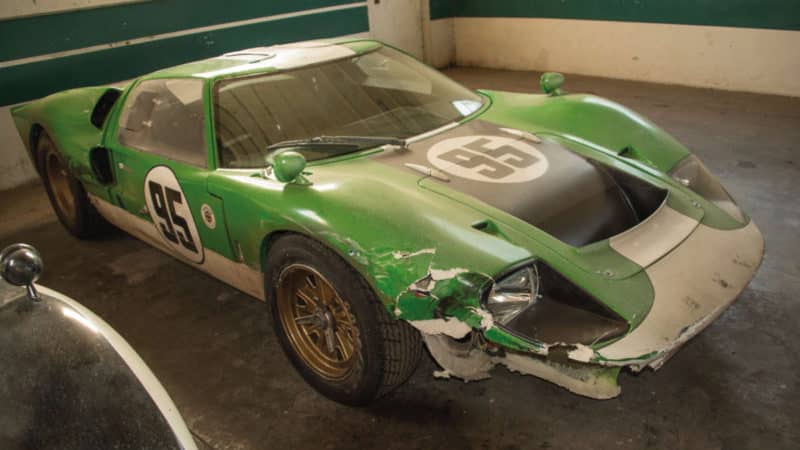
This green GT40 replica recreated the accident at Daytona where it collided with a GT350
On-set photos by Tory Alonzo and Derek Hill
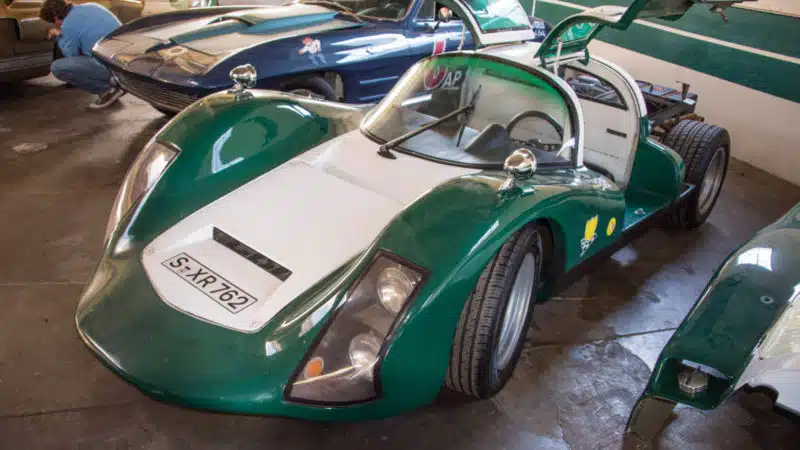
Superformance was another big contributor to the film, leasing the film-makers six Shelby Cobras, two Ford GT40s, two Daytonas and six Ford Mustangs
On-set photos by Tory Alonzo and Derek Hill
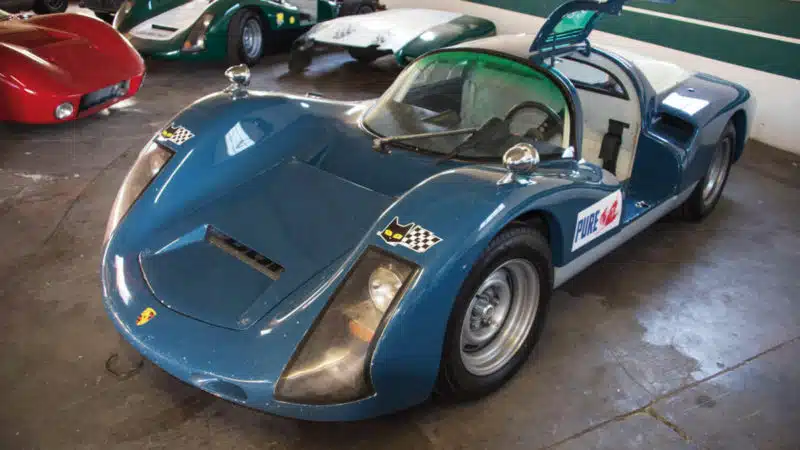
Superformance was another big contributor to the film, leasing the film-makers six Shelby Cobras, two Ford GT40s, two Daytonas and six Ford Mustangs
On-set photos by Tory Alonzo and Derek Hill
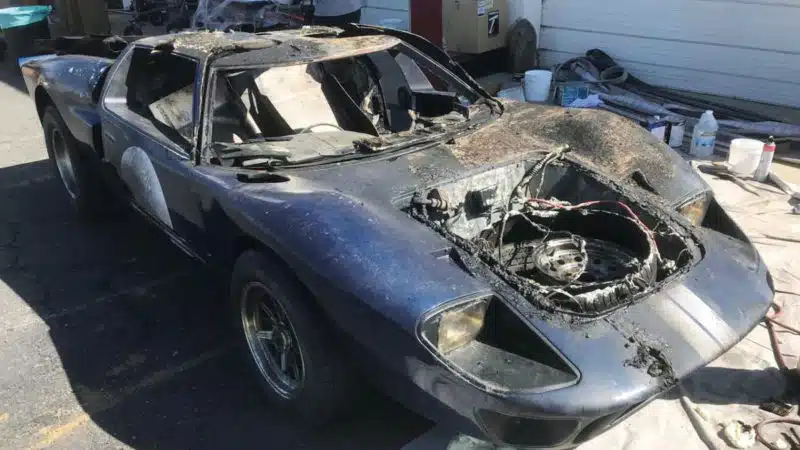
Dirt and burn marks were paint
On-set photos by Tory Alonzo and Derek Hill
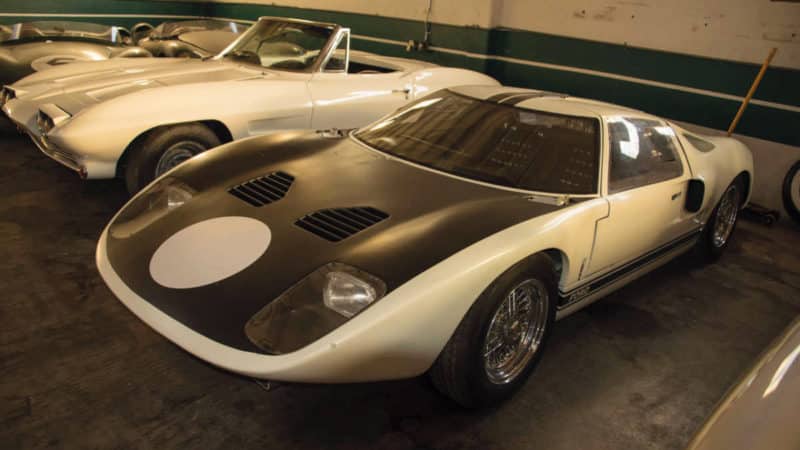
Superformance was another big contributor to the film, leasing the film-makers six Shelby Cobras, two Ford GT40s, two Daytonas and six Ford Mustangs
On-set photos by Tory Alonzo and Derek Hill
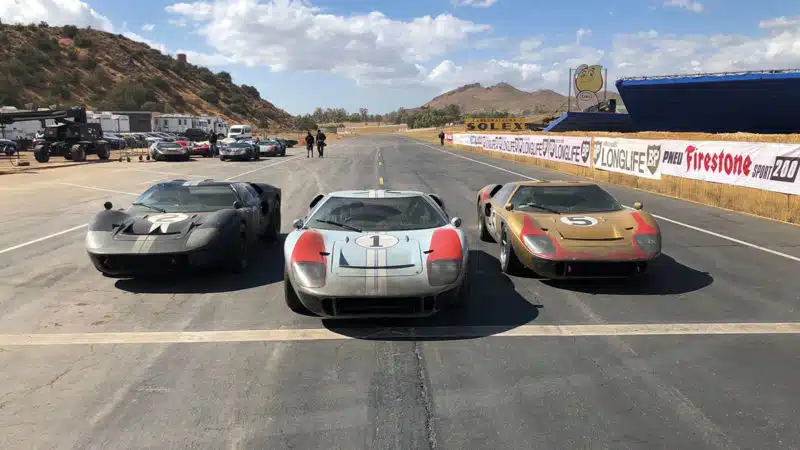
Motion picture set painter Joey Genitempo made the cars look like they had been driving for hours
On-set photos by Tory Alonzo and Derek Hill
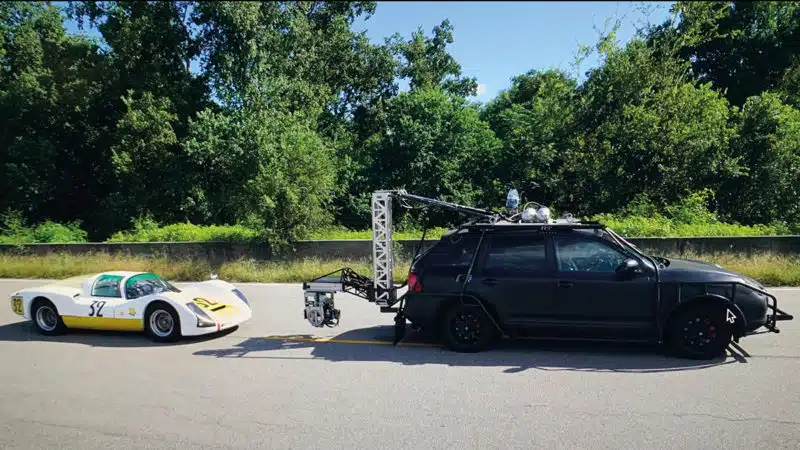
The film crew blocked off an entire six-mile section of road in Georgia to simulate the Mulsanne Straight from the 1960s. The stunt drivers were travelling at 150mph
On-set photos by Tory Alonzo and Derek Hill
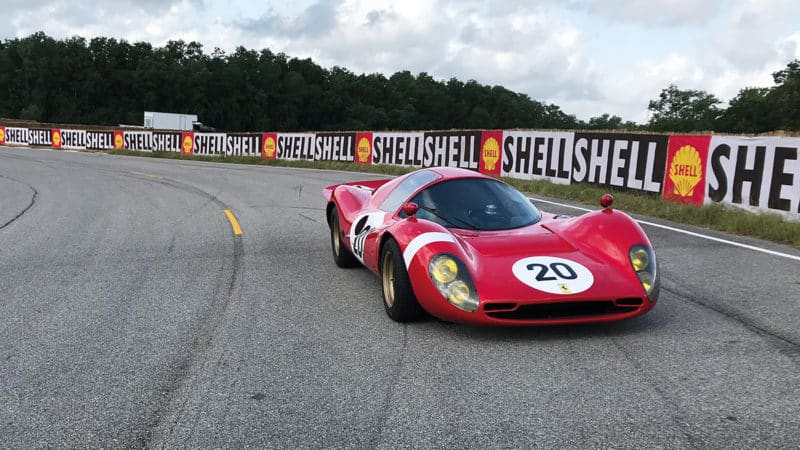
A Ferrari P3 replica ready for action. For the retro-styled Le Mans track, the crew used a range of rural stretches in Georgia, plus a lot of period-correct signage. Director James Mangold insisted on real cars on real roads
On-set photos by Tory Alonzo and Derek Hill
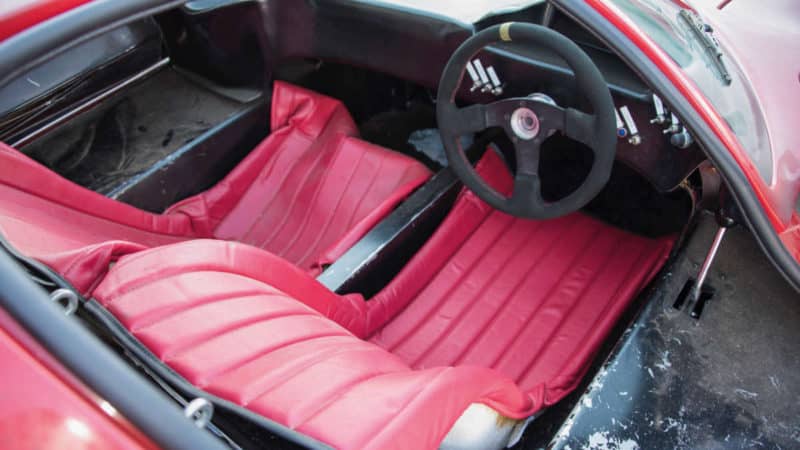
Race Car Replicas made the running Ferrari P3 for the movie. It managed to create 28 different cars in just 16 weeks for the shoot
On-set photos by Tory Alonzo and Derek Hill
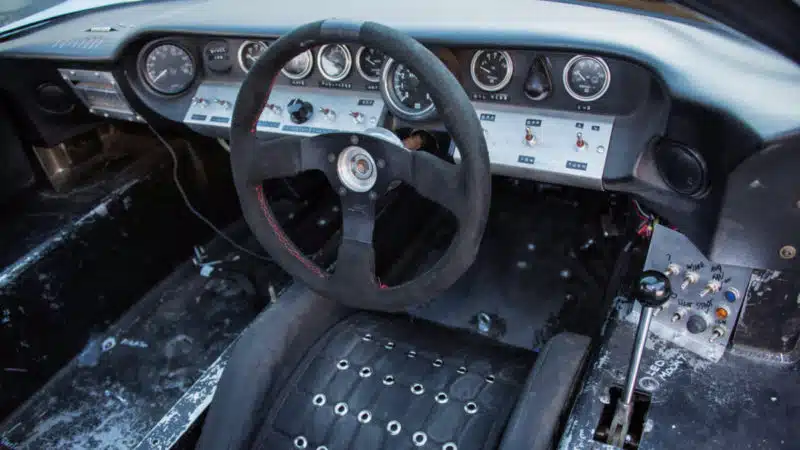
Dashboards of hero cars were researched and reproduced. Modern steering wheels were used for scenes driven at speed, while authentic wheels were swapped out for close up shots
On-set photos by Tory Alonzo and Derek Hill
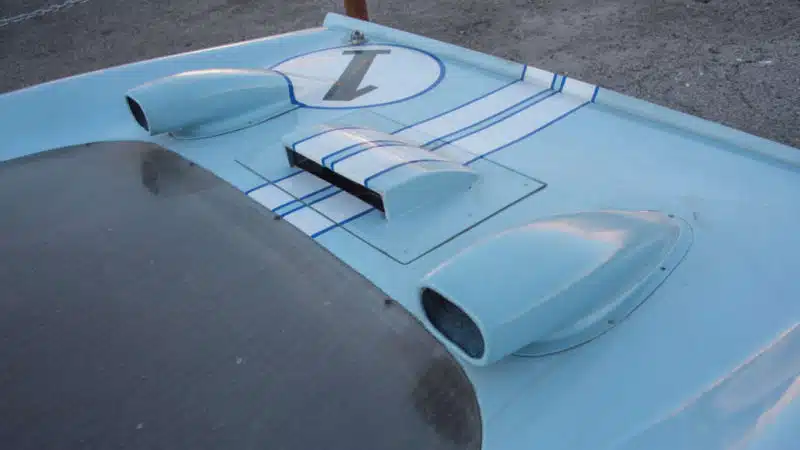
Carefully replicated exterior details added realism
On-set photos by Tory Alonzo and Derek Hill
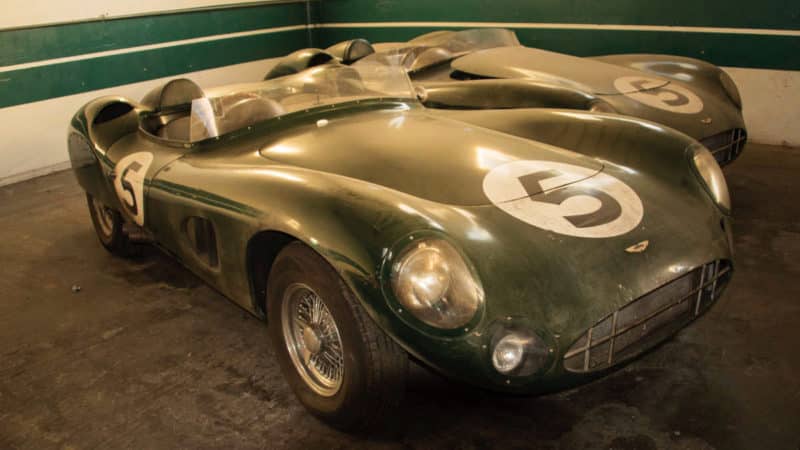
These MEV replicas of the Aston Martin DBR1 were seen early in the film with Shelby at the wheel
On-set photos by Tory Alonzo and Derek Hill
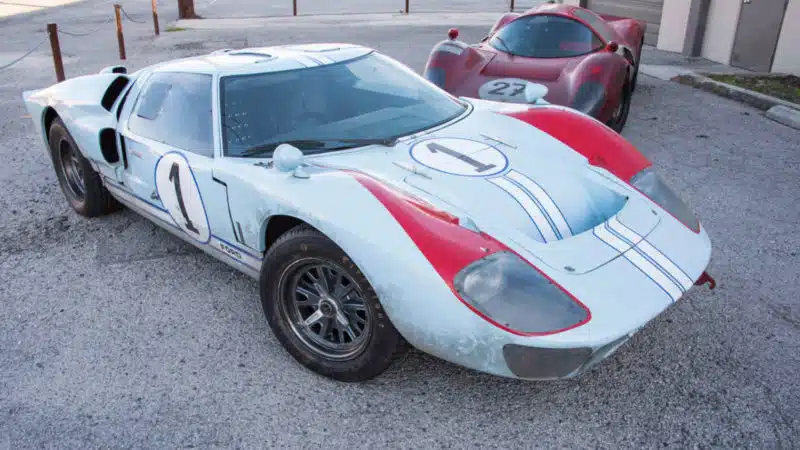
A replica of the Ken Miles/Denny Hulme GT40
On-set photos by Tory Alonzo and Derek Hill
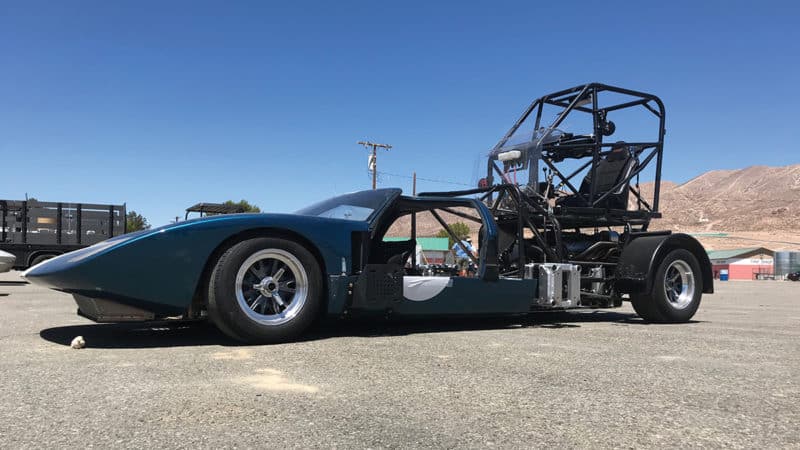
The infamous ‘Biscuit’ pod car used by stunt director Paul Nagle. Created by Allan Padelford Camera Cars, it features a GM Northstar V8 engine and four-speed automatic gearbox. It was created to allow half- or full-shells of both Fords and Ferraris to be bolted to the front, and then handled by the precision driver in the pod at the rear. This helped protect the film’s stars during the high-speed action, and keep insurance costs down
On-set photos by Tory Alonzo and Derek Hill
